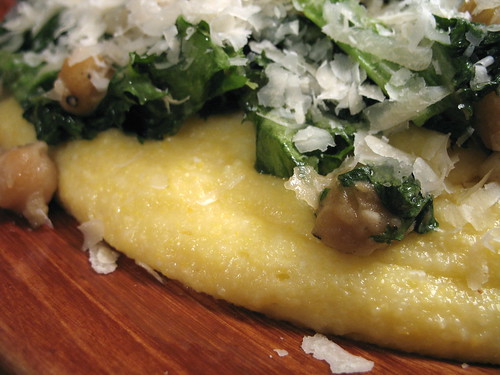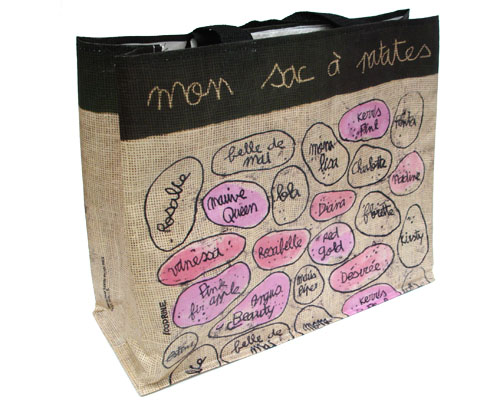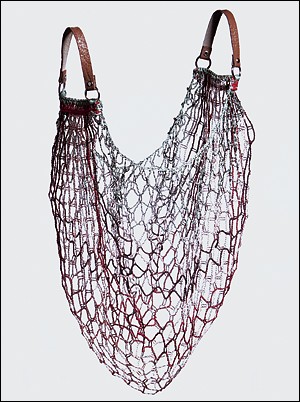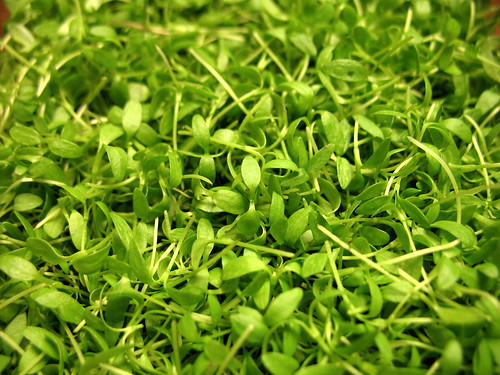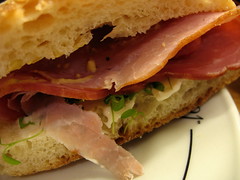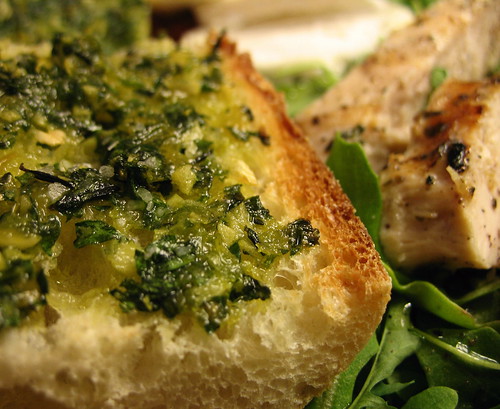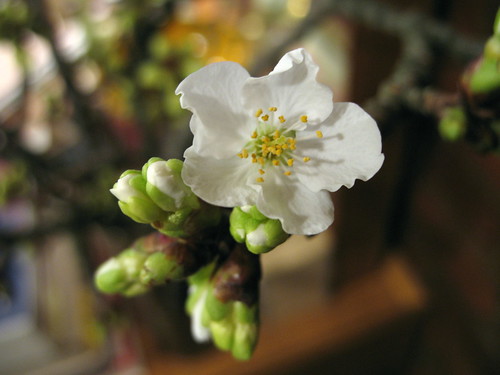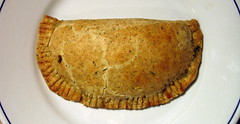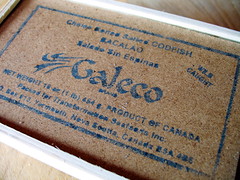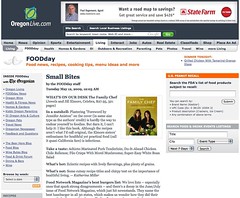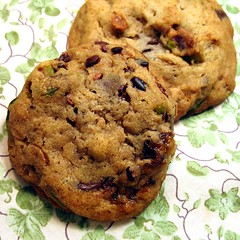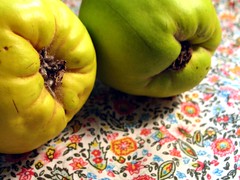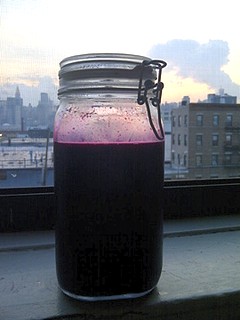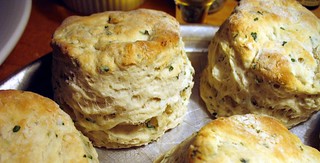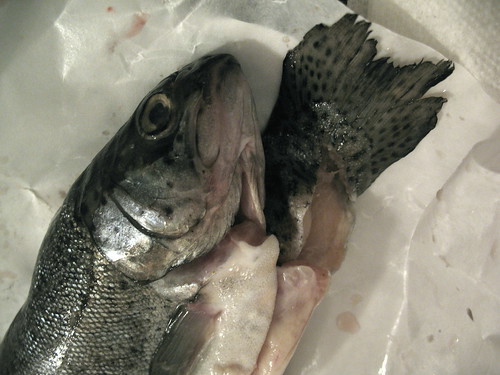
Their heads (and tails) had to come off before they could fit in my skillet, and these were the very first beheadings in the Tiny Banquet Kitchen. I am pleased to announce that it all happened swiftly thanks to Forschner Victorinox, and there was no jeering.
Second, the reason why the potatoes were so good was that I roasted them in duck fat. Quack, quack. According to the people at D'Artagnan it is "nutritionally similar to olive oil," but it sounds like a fattier fat, doesn't it?
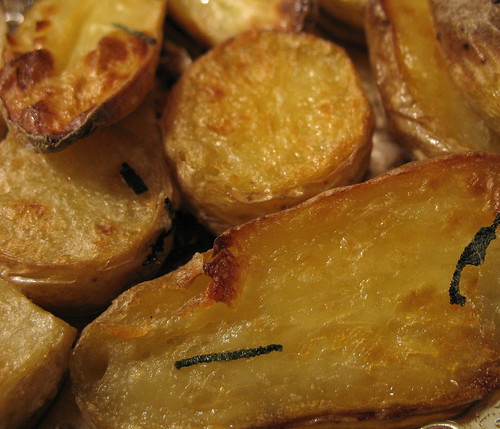
We ate the trout with a hazelnut and mushroom stuffing from Madeleine Kamman's
Savoie: The Land, People, and Food of the French Alps. I was going to hold off on writing about this recipe until autumn because it seems . . . autumnal, but we're still wearing heavy coats and occasionally seeing snow flurries here so I guess now is as good a time as any.
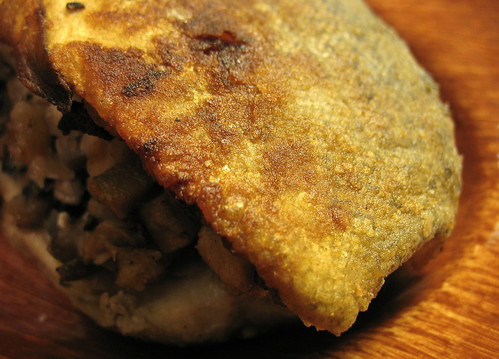
The stuffing works well with the subtly sweet flavor of the trout, and the crisp skin is so delicious that we ate everything but the wee little fins. If you try the recipe (below), do not be tempted to skip the step of clarifying the butter; you need it for this recipe because regular butter would start to smoke before it got hot enough to sauté the fish, and the flavor of olive oil wouldn't work as well with the hazelnuts. There are good instructions on how to clarify butter here if you need them. The butter will make loud cracking noises while it heats, and as with popcorn, the noise will helpfully slow down all of a sudden to let you know that it's time to take the pan off the heat.
The bread crumbs are easiest to make by chopping a few small chunks of baguette in the food processor, but you only need a couple tablespoons of crumbs so you could instead just tear the bread into very small pieces with your hands.
As for the hazelnuts, the easiest way to remove their skin is to gather them in the center of a clean dish towel as soon as they've finished toasting in the oven. (350°F for 15 minutes). Rub the little bundle between your hands as briskly as you can. This should remove most of the skin; scoop up the nuts, shake out the towel, and if necessary, repeat the process while the nuts are still warm to remove the rest. If you are a city dweller without a backyard, shake your hazelnut-skinning towel out the bathroom window, into the airshaft; the skins are perfectly biodegradable and might make a nice nest for whatever little creatures live down there.
I've lightly edited the recipe instructions for clarity; the admonition at the end is Kamman's. I made the full quantity of stuffing although I had only 2 trout to stuff; the leftover stuffing can be baked in mushroom caps the next day, or it can be the filling for an omelet.
Hazelnut-stuffed trout
Truite Farcie aux Noiettes
6 trout, cleaned and boned, or 1 larger fish (to serve 6)
2 tablespoons butter
1 shallot, finely chopped
1/2 pound mushrooms, finely chopped
2 tablespoons fresh bread crumbs
2 cloves garlic, finely chopped
2 tablespoons chopped parsley
1/3 cup peeled, toasted hazelnuts, finely chopped
2-3 tablespoons heavy cream
Salt and freshly ground pepper
All-purpose flour (enough to flour the fish)
1/2 cup clarified butter
Heat the two tablespoons of butter in a skillet and sauté the shallot and mushrooms until the mushrooms start to release their liquid. Add the bread crumbs, garlic, parsley, hazelnuts and heavy cream and season to taste with salt and pepper.

Let the stuffing cool in a bowl and wipe the skillet clean. When the stuffing has cooled, use an equal amount to stuff the cavity of each trout, or, if using a large fish, stuff the cavity with all of it. (If you've made the stuffing in advance and refrigerated it, let it come to room temperature before you stuff and fry the fish; otherwise it won't heat all the way through in the brief time it takes to cook the fish).
Lightly flour the fish and panfry it in the clarified butter for approximately 4 minutes per side, or until the skin is brown and crisp. If using a whole fish, broil it for approximately 6 minutes on each side. Serve plain, without any other sauce.
As for the accompanying potatoes, there is an interesting Nigella Lawson recipe involving goose fat and semolina here and a simpler BBC recipe here. It is far easier to find duck fat than goose fat and I've been using it to roast potatoes since I picked up one of those little D'Artagnan tubs; the flavor is very good and the fat seems to keep well in the freezer.

